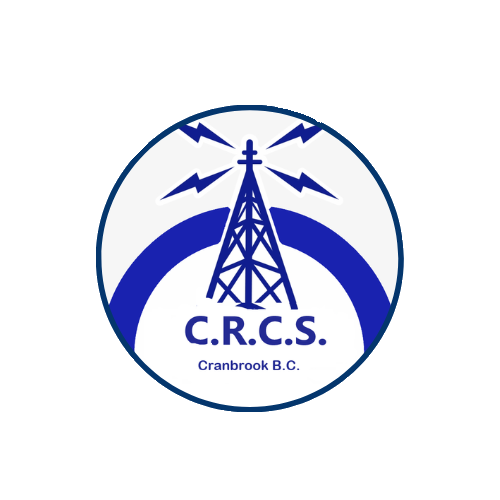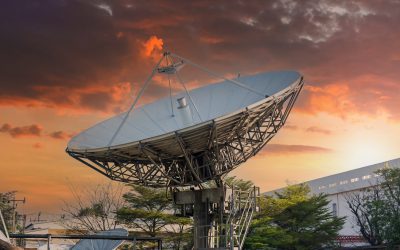Long-Distance Emergency Communication is a critical aspect of maintaining safety and connectivity during disasters. When traditional communication networks fail, amateur radio operators (hams) can step in to provide reliable and efficient communication. One of the most effective tools for achieving this is a radio repeater. Repeaters are crucial for enhancing the range and reliability of radio signals, especially during emergencies. This blog will explore what repeaters are, how they work, and how to use them effectively for long-distance emergency communication.
What is a Radio Repeater?
A radio repeater is a device that receives a weak or low-level signal and retransmits it at a higher power level, thus extending the communication range. Repeaters are typically installed on high locations such as hills, towers, or buildings to maximize coverage. They operate by receiving a signal on one frequency (the input frequency) and simultaneously retransmitting it on another (the output frequency).
Repeaters are essential for long-distance emergency communication because they allow users with handheld radios, which have limited range, to communicate over greater distances. They effectively “repeat” the message, extending the communication range and ensuring that emergency information can reach multiple operators across different locations.
How Repeaters Work
Understanding how repeaters work is crucial for amateur radio operators who want to utilize them effectively during emergencies. Here is a breakdown of the process:
- Transmission and Reception:
- A user’s radio transmits a signal on a specific frequency, known as the repeater’s input frequency.
- The repeater, positioned on a high point, receives this signal.
- After processing, the repeater retransmits the signal on a different frequency, known as the output frequency.
2. Duplex Communication:
- Repeaters use duplex communication, meaning they can receive and transmit at the same time on two separate frequencies.
- This is achieved by having the repeater’s input and output frequencies spaced apart to avoid interference.
3. Antenna Placement:
- Repeaters are often placed in elevated locations to reduce obstructions and maximize the range of the rebroadcast signal.
- This ensures that the signal can cover a larger geographical area, essential for long-distance emergency communication.
4. Offset Frequencies:
- Amateur radios use an offset frequency to connect with repeaters. This offset, also known as “shift,” is the difference between the input and output frequencies.
- For example, if the repeater receives on 146.100 MHz and transmits on 146.700 MHz, the offset is 0.6 MHz.
Types of Repeaters for Emergency Communication
Different types of repeaters serve various purposes. Understanding these types will help amateur radio operators select the appropriate repeater during emergencies:
1. Local Repeaters:
- Local repeaters are used for communication within a small geographical area, such as a city or town.
- They are ideal for coordinating local emergency services, neighborhood watch programs, or community events.
2. Wide-Area Repeaters:
- Wide-area repeaters cover a larger area, sometimes spanning multiple towns or even states.
- They are typically placed on mountains or tall towers, providing extended coverage and ensuring that emergency messages can reach more people.
3. Linked Repeaters:
- Linked repeaters are interconnected networks that allow communication across vast regions, including nationwide and international connections.
- During major emergencies, such as hurricanes or wildfires, linked repeater networks ensure that operators from different regions can coordinate effectively.
Why Use Repeaters for Long-Distance Emergency Communication?
There are several reasons why repeaters are essential for long-distance emergency communication:
1. Extended Communication Range:
- Repeaters amplify the reach of handheld radios, which are typically limited to line-of-sight communication.
- During emergencies, this extended range allows operators to communicate over larger areas, which is essential for coordinating rescue and relief efforts.
2. Reliable Backup Communication:
- When traditional communication networks (cell phones, internet) fail due to power outages or infrastructure damage, repeaters offer a dependable alternative.
- They operate independently of conventional networks, providing continuous connectivity.
3. Efficient Information Relay:
- Repeaters facilitate the relay of information between multiple parties, ensuring that critical messages reach everyone in the network.
- This is especially important when coordinating emergency services, medical aid, and resource distribution.
4. Minimal Equipment Requirements:
- To use a repeater, operators only need a compatible transceiver and knowledge of the repeater’s input and output frequencies.
- This makes it easier for local communities to establish emergency communication networks without requiring extensive infrastructure.
How to Use Repeaters Effectively During Emergencies
For long-distance emergency communication, proper usage of repeaters can make all the difference. Here are some best practices:
1. Identify Local Repeaters:
- Before an emergency arises, familiarize yourself with local repeaters in your area.
- Create a list of frequencies, offsets, and tones (if needed) for repeaters that you can access during an emergency.
2. Program Your Radio:
- Program your radio with the appropriate repeater frequencies, including input/output frequencies and offsets.
- Make sure to test these settings during non-emergency situations to confirm they are correct.
3. Use the Correct Offset and Tones:
- Most repeaters use a specific offset, which must be set correctly on your radio for proper communication.
- Some repeaters may also require a Continuous Tone-Coded Squelch System (CTCSS) tone or a Digital Coded Squelch (DCS) code for access. Be sure to program these if needed.
4. Practice Good Communication Etiquette:
- Identify yourself using your call sign at the start and end of your transmission.
- Keep your messages clear, concise, and relevant, especially during emergencies.
- Avoid using unnecessary jargon, as it can lead to miscommunication.
5. Check for Availability During Emergencies:
- Some repeaters may become overloaded during emergencies due to increased traffic.
- If this occurs, switch to alternate repeaters or simplex communication if possible.
6. Use Linked Repeaters When Necessary:
- If coordinating across larger areas, utilize linked repeater networks to extend the reach of your communication.
- This is particularly useful for large-scale disasters where communication between different regions is critical.
Setting Up Your Own Repeater for Emergency Use
If you are part of a local ham radio club or emergency response team, setting up your own repeater can provide additional support during crises. Here’s a basic outline:
1. Choose a Location:
- The ideal location for a repeater is an elevated area with minimal obstructions.
- Secure permission if placing it on private property or public infrastructure.
2. Select Equipment:
- Basic repeater setup includes a transceiver, antenna, duplexer, and power supply.
- Ensure the equipment is robust and can operate in different weather conditions.
3. Backup Power:
- Prepare backup power solutions like batteries or solar panels to ensure the repeater remains operational during power outages.
4. Secure Licensing and Permissions:
- Ensure your repeater complies with local regulations and is properly licensed.
- Coordinate with local emergency services to integrate the repeater into existing communication plans.
5. Regular Maintenance and Testing:
- Regularly check and maintain the repeater to ensure it functions correctly during emergencies.
- Conduct periodic drills to familiarize operators with using the repeater in various scenarios.
Understanding and using repeaters for long-distance emergency communication is essential for amateur radio operators who want to play an active role in emergency preparedness and response. By extending the communication range and ensuring reliable connectivity, repeaters provide a critical lifeline during disasters, public events, and community emergencies. With proper planning, equipment, and skills, ham radio enthusiasts can ensure they are ready to step up and assist their communities when the need arises.




